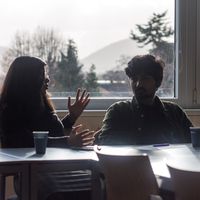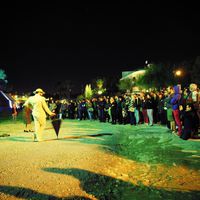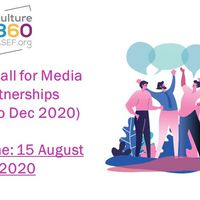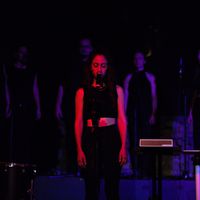ASEM Cultural Festival 2021 | Interview with H.E. Hab Touch, Ministry of Culture & Fine Arts of Cambodia
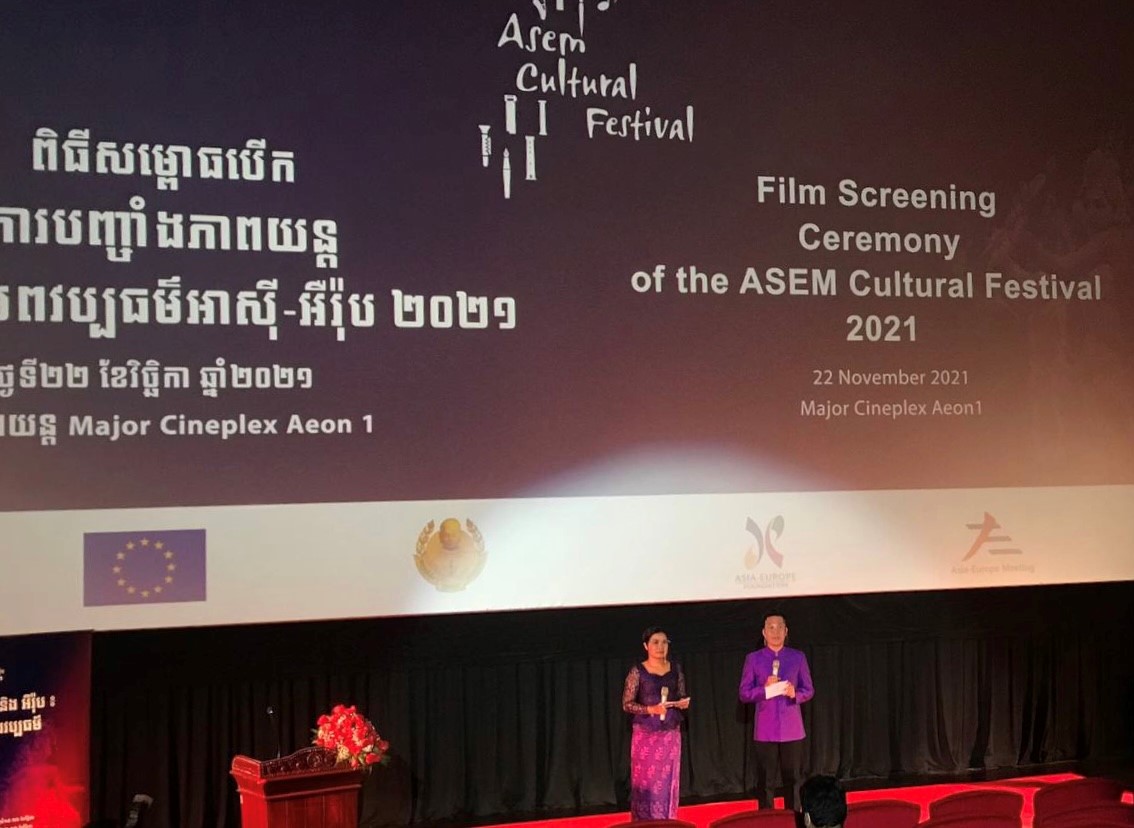
Looking back at the first hybrid version of the ASEM Cultural Festival 2021, Preeti Gaonkar and Bridget Lee from the Asia-Europe Foundation (ASEF), interviewed His Excellency Hab Touch from Ministry of Culture and Fine Arts of Cambodia who was the Head of the Exhibitions and Promotions team for the Festival.
The ASEM Cultural Festival 2021 is the official side-event of the 13th ASEM Summit hosted by the Royal Government of Cambodia. This year, the Festival programme was adapted to the new realities of a world restricted of the physical interactions due to the COVID-19 pandemic. Over 30 events were showcased at the Festival with some events being organised on-site and online. Tell us about your experience of organising a hybrid Festival.
As this was our first time organising a hybrid festival, I think this experience brought about many positive takeaways for myself and my team. Previously, the arts festivals we organised in Cambodia typically followed more traditional formats where the programme was held on-site without any additional platforms for digitalised programming. Due to the Covid-19 pandemic, we had to adapt to the ‘new normal’, both in our daily lives as well as in our festival organisation strategies. In Phnom Penh, we held a smaller number of film screenings, and exhibitions on-site, but audiences could also access programmes online from the safety of their own homes. By adopting a hybrid model, we were able to garner much more ardent participation from international artists and present their artistic works to the best of our abilities, despite them being unable to join us on-site in Phnom Penh.
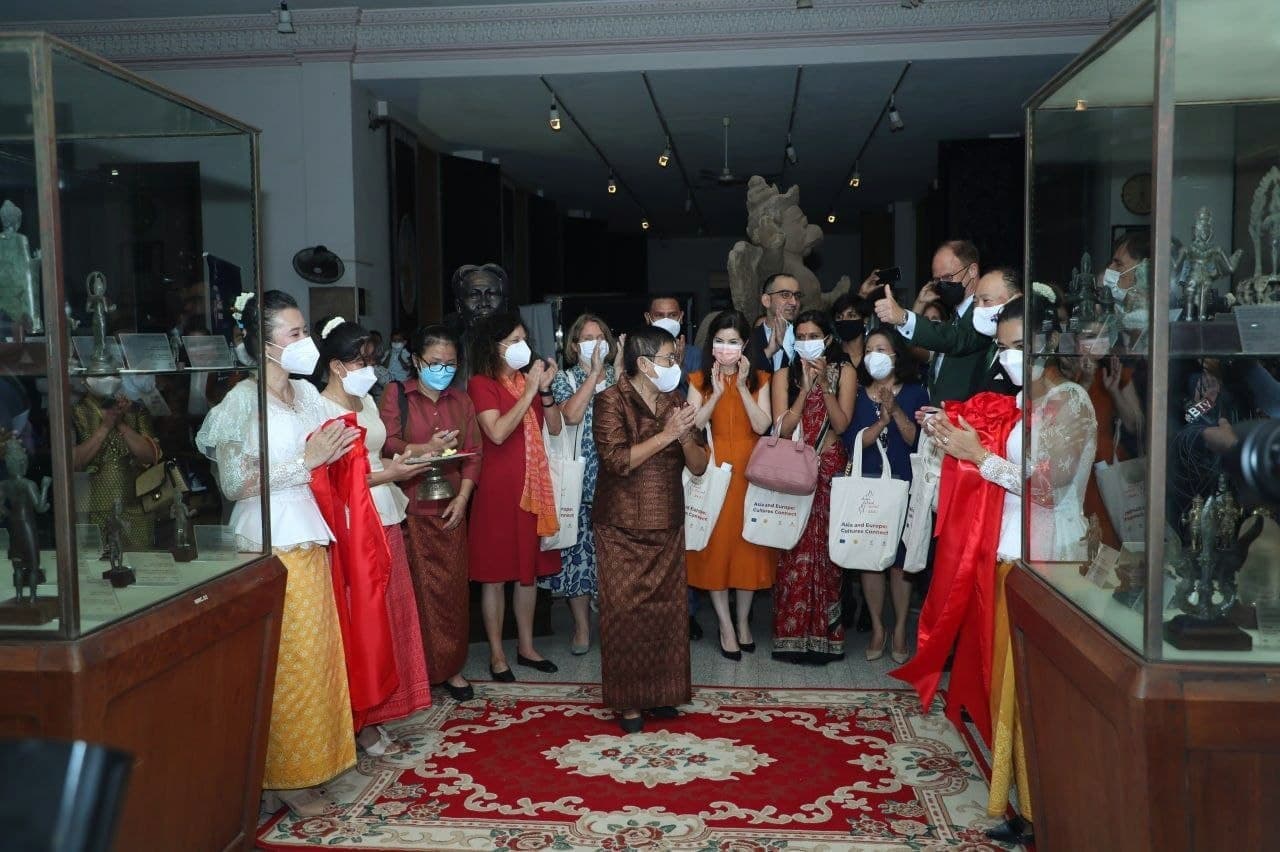
Her Excellency Dr Phoeurng Sackona, Minister of Culture and Fine Arts of Cambodia, at the opening of the ASEM Cultural Festival 2021 exhibitions at the National Museum of Cambodia. (c) Ministry of Culture and Fine Arts, Cambodia
The National Museum of Cambodia served as the impressive venue for the on-site exhibitions. These exhibitions featuring paintings, installations, jewellery and photography, bringing together over 50 artists from Asia and Europe. What were your thoughts behind putting together such a diverse range of programming for the exhibitions?
The National Museum of Cambodia has always had a strong focus on its local collection, encompassing a large number of talented Cambodian artists. The ASEM Cultural Festival has provided ample opportunities for local artists in Cambodia to shared their work with audiences who may not typically come across Cambodian art, and we were enthused to be able to facilitate exhibitions which brought both local and international artists from the ASEM region together on the same global platform. These exhibitions at the National Museum were exceptionally unique experiences for our audiences, as it was not just a collective of Cambodian and international artists showcasing their works. Rather, these exhibitions went above and beyond geographical boundaries and art forms, highlighting collaborative experiences and how artists were able to collaborate on artworks surrounding themes of cultural cohesion and mutual sharing of lived experiences, despite their different backgrounds and disciplines.
As organisers, the fast-paced environment surrounding these programmes meant that our arts managers had to adapt to new challenges of coordinating across time zones and digitalised communication platforms. Even tasks like the bilingual translation process between English and Khmer came with its fair share of challenges, but with mutual support and cooperation, we managed to smoothly kickstart the festival opening and received many positive responses from our audiences at the exhibition.
We were surprised at the overwhelming response from the public, and that our local audiences were so eager to sign up and attend the on-site exhibitions. In fact, many of our guests for the opening day included representatives from various diplomatic missions as well as the Cambodian government. Prior to the festival, we went through extended periods of lockdown, and our audiences were looking forward to new interesting activities and events to attend. This all lined up perfectly with the Festival opening, and their enthusiasm and support for our programmes was especially meaningful to the team.

Audience listening ardently to the artist during the opening of the ASEM Cultural Festival 2021 exhibitions at the National Museum of Cambodia. (c) Ministry of Culture and Fine Arts, Cambodia
Along with the exhibitions, several film screenings were organised in Phnom Penh as part of the Festival. What kind of response have you received from audiences in Cambodia?
With the new health measures in place, cinemas were also slowly opened up in November 2021. The Festival screenings had to abide by the new operating procedures as well, and we had to limit our audience numbers to 50%, so as to safely go ahead with the programmes. Due to the ‘new normal’ situation, we understood that audiences might have concerns around spending 1-2 hours in an enclosed space with other viewers. In comparison, the National Museum is a much larger and well-ventilated space, so the team organising the film screenings had to account for a different approach towards organising this programme, in order to address the needs and concerns of our audiences.
The screenings were much more popular with younger audiences who mostly attended afternoon and evening shows. These screenings were a great promotional opportunity for the general public to be introduced to the Asia-Europe Meeting (ASEM) and the Festival, as attendees got a sneak peek into the Festival programmes through our teaser video presented at the start of each on-site film screening.
Now on a personal note, from the various events presented at the Festival, do you have any personal favourite/s or any artistic work that particularly resonated with you?
Throughout the duration of the festival, I had the opportunity to attend many on-site events and peruse the collection of programmes we had online as well. I can’t highlight any favourites of mine, as the entire experience was very eye-opening to me, especially due to the incorporation of the hybrid format. Having spent so long viewing the Festival from the lens of an organiser (as it was postponed since November 2020 due to the pandemic), seeing the final product was something that greatly impressed me. In the beginning, we had a more traditional perspective in our approach to the festival, however, moving forward I am keen to encourage more arts managers and cultural professionals to consider bringing in greater degrees of digitalisation in future arts programming.
Due to the pandemic, adapting to the new normal has its own unprecedented benefit where it introduced a new possibility of digitalised festivals to us. The responses to the Festival has reflected the success of a hybridised arts festival, but it also requires new methodologies and strategies for its smooth implementation. This experience made us realise the sheer number of people that could gain access to our works and programmes from across the world. Hopefully with more local arts professionals adopting hybrid models, we can become more active participants in international cultural exchange and showcasing Cambodian arts and culture abroad.

His Excellency Hab Touch from the Ministry of Culture and Fine Arts of Cambodia, Head of the Exhibitions and Promotions team for ASEM Cultural Festival 2021. (c) Ministry of Culture and Fine Arts, Cambodia
In the context of Asia-Europe relations, what role do you see for artists and cultural professionals to enhance the connections between the two regions?
Artists and cultural professionals play very important roles in Asia-Europe relations, as they are the ones facilitating people-to-people connections from the ground up. With the pandemic, many global networks were adversely impacted, and a lack of cultural understanding only leads to less cohesion. This is where artists and cultural professionals are crucial members of our society - as they are the ones bridging bonds through various artforms and depictions of culture in a palatable way. People have always been dependent on the arts and culture sectors for recreation and entertainment, and opportunities to host an arts festival like this are excellent starting points to establish a deeper appreciation and understanding between the two regions.
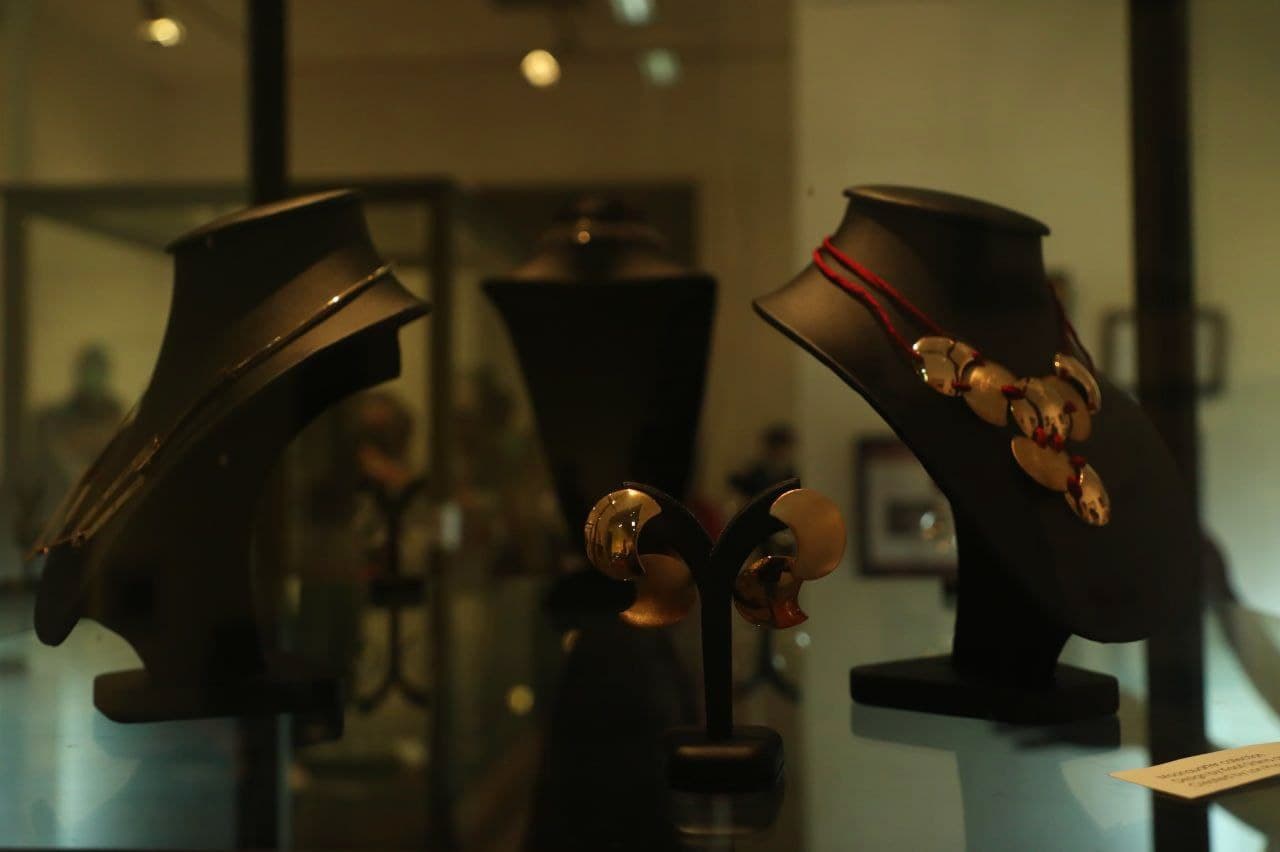
'Il Nodo: A Sketch for Hope' exhibition presented a collection of handcrafted jewellery produced collaboratively by Cambodian and Italian artists. (c) Ministry of Culture and Fine Arts, Cambodia
And lastly, would you like to share a message with our readers about the importance of Asia-Europe cultural relations particularly in this ‘new normal’ world?
Cultural cooperation and mutual understanding are ever more important today. Asia-Europe cultural relations have played an important role both amongst civil society and at the governmental level. Initiatives such as the ASEM Cultural Festival serve as steppingstones to a much larger and meaningful purpose - where we will be able to understand each other’s differences and work collectively towards shared aspirations. For artists and cultural professionals who may have suffered due to the Covid-19 pandemic, we hoped to be able to bring more awareness and appreciation to their work and garner additional support for the arts community.
Adapting to the ‘new normal’ is never an easy process, and times like this highlight how cultural relations can extend to the way countries can support each other, be it through various resources, opportunities, and mutual shared experiences. We would like to extend once again our thanks to ASEM, the Asia-Europe Foundation (ASEF), and the European Union for the organisational support and cooperation.
The ASEM Cultural Festival took place in Brussels, Phnom Penh and online (November 2021) alongside the 13th ASEM Summit (ASEM13) (25-26 November 2021, Cambodia), which brought together Heads of State and Government from the 53 partners of the Asia-Europe Meeting (ASEM) for dialogue on "Strengthening Multilateralism for Shared Growth". The exhibitions featured in the Festival are available for extended viewing till 31 December 2021 on-site and online.
The ASEM Cultural Festival is a celebration of dance, digital art, film, music, theatre and visual arts from Asia and Europe and features artistic collaborations and cultural diversity from the ASEM region.
The ASEM Cultural Festival programme can be viewed here
The Festival was organised – as an official side event ASEM13 – by Ministry of Culture and Fine Arts of Cambodia in partnership with the European Union and the Asia-Europe Foundation (ASEF).
Similar content
from - to
15 Nov 2021 - 30 Nov 2021
from - to
22 Nov 2021 - 26 Nov 2021
By Winnie Lim
13 Dec 2021
deadline
15 Aug 2020
By culture360
24 Nov 2021



